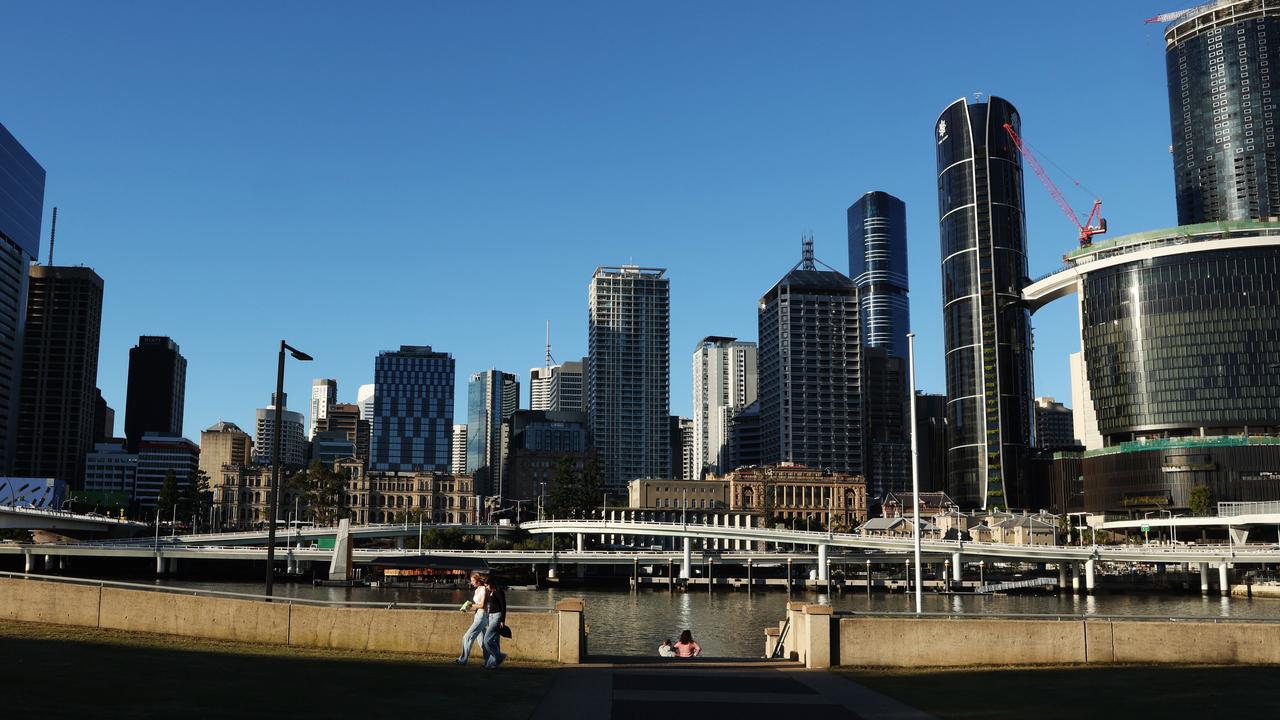Macquarie Group on cusp of trademark energy switch
After years defying gravity, the homegrown investment bank is falling back to earth and this has promoted a different approach.
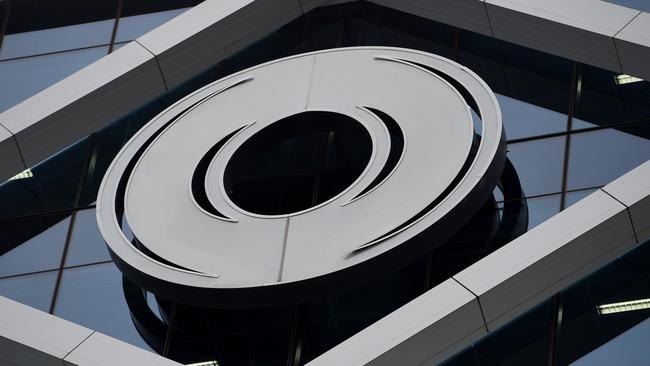
Business
Don't miss out on the headlines from Business. Followed categories will be added to My News.
The biggest sign that Macquarie has fallen back to earth isn’t so much the sharp profit crunch over the past year but rather that breakneck jobs growth since the pandemic has come to a grinding halt.
This should be a worry for investors. For Macquarie, headcount has long been seen as a source of pride, indeed it was often used as a lead indicator of future growth. But it is no more.
Jobs growth across the investment bank was up just 1 per cent over the past 12 months to 20,600, marking the slowest pace in nearly a decade.
The bank was boasting double-digit growth in each of the past few years and all up staff numbers jumped 30 per cent from when Covid-19 began up-ending the world. Headcount was growing so fast that the investment bank has been building a flashy new 39-storey headquarters in Sydney which will already be full by the time it opens this year.
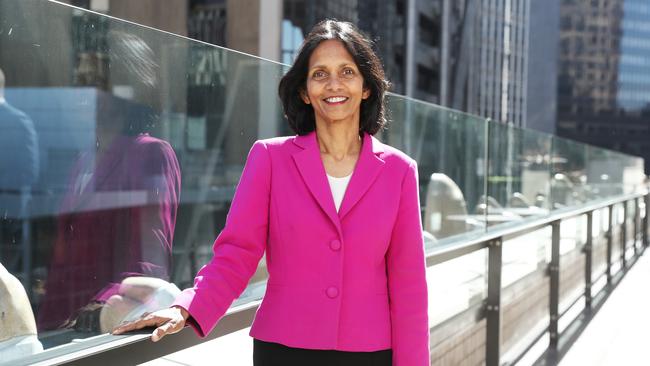
There have been several drivers of the jobs growth over this time. As Macquarie has become bigger and more complicated particularly in banking, it’s had to appoint more staff in regulatory and compliance roles. It has also completed a handful of funds and markets-related acquisitions, including AMP’s equity and fixed-income business and there have also been a number of large technology projects underway.
Of course, jobs have been added on Macquarie’s traditional mandate of pursuing raw revenue growth. Now after a bumpy time in markets, the investment bank is looking at a period of consolidation.
Profit drop
Macquarie issued a rare break in earnings momentum on Friday. Headline profit dropped by a third to $3.5bn over the past year, although that came after a knockout profit the year before when former commodities rainmaker Nick O’Kane delivered an energy trading windfall. (O’Kane left the bank last year).
Macquarie’s return on equity, usually a premium number, looked more like a sleepy main street banks. It fell by a third to 10.8 per cent, as green energy assets were building up on its balance sheet. The full-year dividend fell 15 per cent to $6.40 a share.
With CEO Shemara Wikramanayake issuing a cautious near-term outlook, investors sold down Macquarie shares 2.4 per cent.
The funk in the numbers underscore the bigger challenge Wikramanayake faces as her big bet on the green energy boom faces near-term indigestion. With the weight of costly investments in solar farms, windmills and batteries sitting on her balance sheet, this means earnings from her powerhouse funds management unit Macquarie Asset Management, or MAM, has shifted down a gear.
Indeed the green energy fade weighed heavily on earnings across MAM over the year, where sales of some projects slowed – particularly in the first half – and those that Macquarie are developing needed more investment.
Usually one of the investment bank’s biggest profit centres, MAM’s profit for the past year fell 48 per cent to $1.21bn.
Make no mistake, Wikramanayake is still bullish about the green energy revolution but she emphasises this is a long-dated play. But among the patchy nature of asset sales (last year it sold none compared to $800m the previous year) and capital intensive demands of being the king of green power, Macquarie is subtly changing its approach.
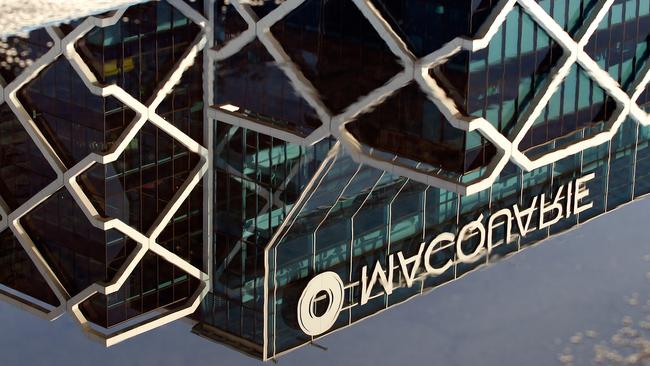
Rather than being a developer and flipping green assets, it is going back to the future as it moves to the more traditional infrastructure management model. This so-called annuity model is a develop-and-manage approach, or even acquire and manage, which demands patient capital for early stage assets that could take years to recover costs. Luckily for Macquarie it also represents a new stream of income – base and performance fees. And also lucky, moving assets off its balance sheet into co-managed funds takes the pressure of its sagging return on equity.
In recent weeks the bank launched the Macquarie Green Energy and Climate Opportunities Fund (MGECO) that has acquired a portfolio of six solar wind and battery projects held by Macquarie. In total, 17 gigawatts of the 105 gigawatts Macquarie currently has under development is going into MGECO. (The fund already has the nickname ‘M-gecko’)
This fund has caught attention of some, given the appearance of Macquarie’s pre-GFC model of moving assets between satellite funds and generating lucrative fees for itself along the way.
However Wikramanayake says the assets have been crossed into the fund largely at cost, recovering the development expenses with the aim for them to seed for co-investors.
The assets too are at such an early stage that they are unlikely to represent a windfall gain if they were sold directly to the market.
“What’s going on in the energy transition is much, much more capital has to flow to it,” Wikramanayake tells The Australian in an interview.
Indeed last year there was $1.9 trillion flowing into green investments globally, this is double the rate in just a few years.
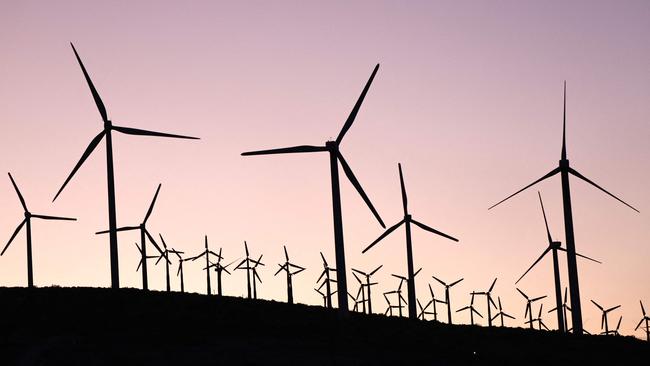
“This rate and absolute amount of growth is just going to keep stepping up. The capital needed is going to become well beyond our balance sheet. So we thought we should move into a fund approach, where we bring third party capital.”
Macquarie’s co-investors in green energy – be they big super fund partners or governments – have also been pushing the bank to have more skin in the game with some of the assets.
When it is up and running, MGECO will also be a vehicle to make its own green-linked acquisitions, much like green funds operated by Canadian rival Brookfield.
Acquisition could be along any part of the climate transition chain from transport, agriculture and buildings. But energy in itself “is such a big strategy”, the Macquarie boss says.
Slowing down
Still, as a creature of markets and investment flows, the latest set of accounts show Macquarie couldn’t keep outrunning a global economy that is adjusting to higher interest rates.
It is also facing pressures at home with its new star performer retail banking starting to slow as it too is hitting the limits of growth for now.
While Macquarie has managed to run rings around Australia’s big four lenders, even returns are now slowing. Macquarie acknowledged the competitive heat of the market it has stirred up, with margins being squeezed and the pace of lending growth cooling. Elsewhere Macquarie’s commodities and markets unit faces a flat outlook as prices for energy pull back.
The one very bright spot for Macquarie is its traditional investment banking business -Macquarie Capital – the only one if its four key business units to increase profit over the past year and more growth is expected to come.
Like key rivals Brookfield and KKR, Macquarie Capital has been directing more funds into private credit. And a relatively stable interest rate outlook is again stoking long-dormant merger and acquisition activity, and stockmarket listings, with Macquarie set to be the big winner out of this.
Investors that have underestimated Macquarie nearly always come out second best.
And despite the subdued near-term outlook, Wikramanayake says all four of the bank’s business units – asset management; commodities, Macquarie Capital, and banking and finance, will get the all the capital they need if they see a growth opportunity to invest in. Even with the bank pushing nearly $1 trillion under management for the first time, Macquarie is still a small player in its chosen markets, Wikramanayake says. This means there is plenty of room to keep taking share from others.
“Structurally, we think all four are positioned to keep growing,” she says.
johnstone@theaustralian.com.au
Originally published as Macquarie Group on cusp of trademark energy switch




